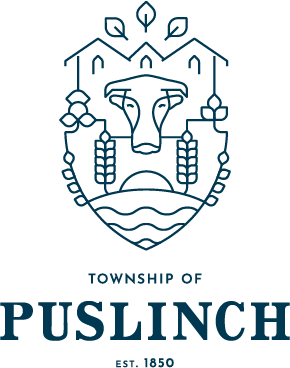Contact(s)
Industrial, Commercial and Institutional Property Owners and Source Protection
Industrial, Commercial and Institutional property owners play an important role in ensuring that drinking water sources are protected now and into the future. Often activities occurring on commercial or industrial properties involve the use, production, storage and/or disposal of chemicals which have the potential to impact ground or surface water sources.
Prescribed Activities
Water Quality
There are several pathways that contamination from commercial/industrial activities can occur, examples of possible contamination are:
- Storage of fuel at locations such as bulk plants or gas stations that may lead to leaks or spills
- Handling and storage of Dense Non-Aqueous Phase Liquids DNAPLs - learn more
- Handling and storage of organic solvents - learn more
- Discharge of industrial effluent
- Improper handling and storage of commercial fertilizer
- Improper handling and storage of pesticides
- Application of road salt- see resources below
- Storage of snow (chloride, sodium, and petroleum hydrocarbons)
Water Quantity
Industrial, commercial and institutional properties located in water quantity (WHPA Q) vulnerable areas should be using Low Impact Development (LID) best management practices to reduce water consumption and increase recharge on their properties.
Low Impact Development Resources:
Credit Valley Conservation Low Impact Development (LID) Resources
MECP is set to release "Low Impact Development Stormwater Management Guidance" in the future
Managing Property Risk
Properties located near municipal wells or within vulnerable areas need to take extra care to protect drinking water sources relating to water quality and/or quantity. Regulatory approval may be required for those properties that are considered significant threats to drinking water sources. In these areas, mandatory site visits will be taking place on properties located within these areas.
Risk Management Plans
Risk Management Plans are a tool introduced by the Clean Water Act that requires an agreement to be reached between a Risk Management Official and the person engaged in the prescribed activity. This agreement creates a plan to manage the risk activity and is negotiated unless an agreement cannot be reached. Once these plans are established or agreed to, these plans are legally binding. The Risk Management Official/Inspector will work with you to develop a Risk Management Plan that works with your business.
Prohibitions
Prohibitions are determined by Source Protection Committees to prohibit certain activities (including those that started before the plans came into effect) that could become significant threats to source water protection. Municipalities will be responsible for enforcing these prohibitions through their Risk Management Official. In Wellington County, Organic Solvents and DNAPL handling and storage are examples of activities that are prohibited in certain locations within the County.
Site Visits
Why is my property being visited?
This is a program run by Wellington Source Water Protection and your municipality. The site visit program is an assessment of activities occurring on industrial, commercial, and institutional properties to determine the potential for those activities to impact municipal wells. The visit is primarily an education visit to inform owners / tenants about the Clean Water Act and any potential obligations. Our consultants or staff will also walk you through a survey regarding activities such as chemical handling, fuel storage, waste etc.
Your property is being visited because it is within a vulnerable area for your local municipal water supply well.
The vulnerable areas include well head protection areas with a groundwater vulnerability score of 2, 4, 6, 8 or 10 (yellow, orange and red areas on maps and 'issues contributing areas'. For more information about water quantity vulnerable areas check out our water quantity page. These areas have been established by local and provincial experts using the best available science for more information. The results are published in watershed based Assessment Reports and Source Protection Plans.
Who will complete the site visit?
Municipal staff will be conducting the site visits in the Town of Minto and Township of Guelph/Eramosa. Site visits in the other municipalities in the county were conducted in 2015/2016 by our consultant R.J Burnside.
How do I schedule a site visit?
Municipal staff will be in touch to schedule a time for a site visit.
Do I have to be present for the site visit?
Yes, it is important that someone familiar with the operations of the business be present. This could be an owner, manager, maintenance staff, supervisor, environmental or health and safety personnel, lead hand, foreman etc.
How long will the site visit take?
The site visit will take about 45 to 60 minutes.
What will be looked at during the site visit? Is this an inspection?
No, the site visit is not an inspection. This is an educational visit to discuss the purpose of the Clean Water Act and whether there may be requirements for your business to follow. Whether requirements apply to your business depends on the activities being conducted there. In particular, the Clean Water Act prescribes 21 types of activities including: waste handling, fuel storage, chemical handling (organic solvents and dense non-aqueous phase liquids), fertilizer storage and application, pesticide storage and application, road salt application and storage. Requirements under the Clean Water Act and Source Protection Plan are generally volume or chemical based. Small volumes of chemicals associated with these activities generally will not trigger requirements. The purpose of the site visits is to determine the approximate volumes and /or chemicals on site.
For more information:


 Centre Wellington Township
Centre Wellington Township Guelph/Eramosa Township
Guelph/Eramosa Township Mapleton Township
Mapleton Township Township of Puslinch
Township of Puslinch The Township of Wellington North
The Township of Wellington North Town of Minto
Town of Minto County of Wellington
County of Wellington Town of Erin
Town of Erin







